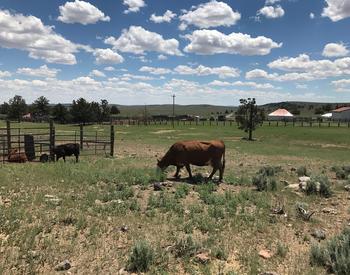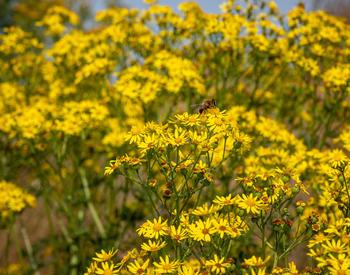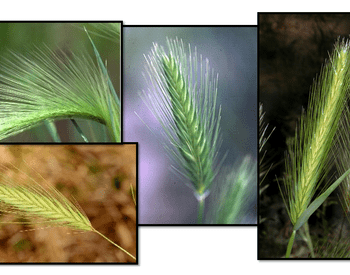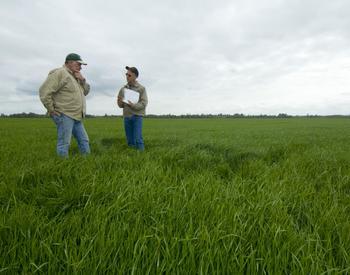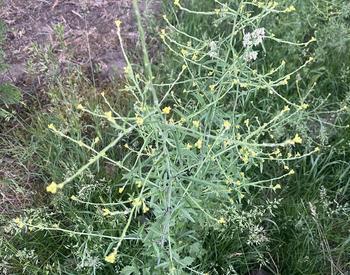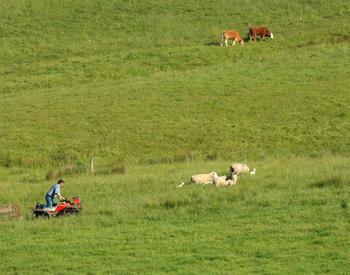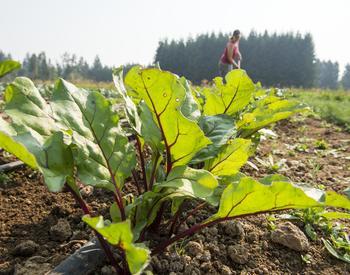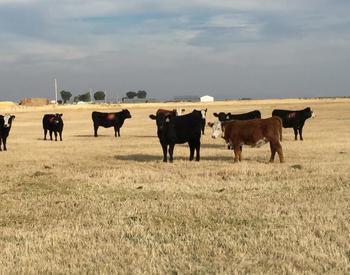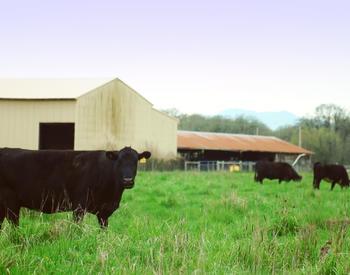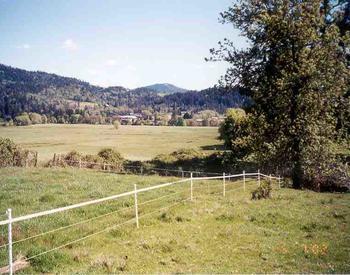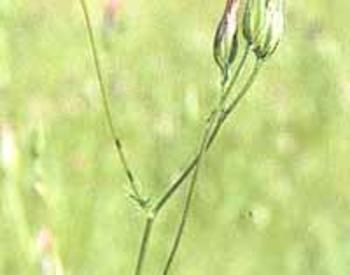When winter and spring weather conditions have reduced spring forage growth, producers may find they don't have enough feed stored away for their amount of livestock. Some are able to overcome these issues, but others may need options if they are short on grass hay. The following are a few options to consider.
Purchase hay
The first option is to buy grass hay. It is a good idea to have the hay tested so you know the nutrient content. This allows you to compare it with the nutrient requirements of the type and class of animals you will be feeding, and adjust the diet accordingly to meet their needs for growth, milk, maintenance, etc. The OSU Extension Service has a hay probe you can borrow to sample the hay. Send the samples to a lab for analysis.
Alfalfa hay
Alfalfa hay may be an option for some. Usually higher in protein and energy than grass hay, it is sometimes available at a lower cost. Some rained-on alfalfa hay might meet the nutrient requirements of your livestock. Alfalfa may be fed at strategic times like after lambing or calving. Test hay to be sure it meets the nutrient requirement of the animals you are feeding.
Straw and seed screenings
Another option in times of forage shortages is to feed grass straw or grass screening pellets from the Willamette Valley. There are two things you should be aware of when buying grass straw:
First, if you choose to buy fescue or ryegrass straw, make sure it is low-endophyte, or blend it with another feed so the total diet has a low endophyte concentration.
As you may know, endophytes are a type of fungus that helps protect the plant from disease. They are bred into turfgrass-type fescues but are toxic to livestock. The forage-type fescues and ryegrass sold in Oregon are endophyte-free. Information on endophyte testing and tolerances by livestock is available.
Second, make sure you check the nutrient content of the straw. If the straw is 5% to 8% protein and your lactating cows require 10% protein, you will need to supplement the grass straw to meet the needs of the animals. Feed some feeder-quality alfalfa hay (5 to 8 lbs) along with the grass straw. You can get information on balancing rations for protein content from the Extension office.
Stockpiled forage
Although the nutritive value of mature forage that is standing in the field can be very low, cows, sheep and other ruminants can use this if they're also fed a small amount of supplemental protein. Consider renting mature pasture and supplementing it with alfalfa hay or another protein source (for example, soybean meal or cottonseed meal).
You don’t have to feed the protein supplement every day. Protein supplements are actually used more efficiently if you feed a double dose every other day, or three times the daily amount every three days. This improves both labor costs and feed efficiency.
Grain
Feeding some grain is another way to conserve forage. Depending on the cost of grain and hay, it may or may not be more expensive. Slowly adapt animals to grain diets by substituting a few pounds of grain for a few pounds of hay. Every few days, increase the amount of grain in the diet until you reach the desired grain level. This could be done over a period of 2 to 3 weeks.
For example, a 1,200-lb cow will eat about 30 lb of feed (2.5% of her body weight) each day. She could be transitioned from an all-forage diet to a diet of 20 lb of forage and 10 lb of grain. If you need to feed more grain, slowly adapt her to the diet over time (3 to 4 weeks).
Ruminants require a diet that is at least 10% forage (pasture or hay) for a functional digestive system. A high-grain diet contains more energy than mature cows need. Although the cow's need for feed will be satisfied, she will probably gain weight on this diet.
Diet changes
Make any diet changes slowly so as not to upset the animal’s digestive system, especially if adding grain. Major changes should be done gradually over a two-week period.
Reduce animal numbers
Consider culling undesirable animals. Have your veterinarian pregnancy-check your cows and ewes and get rid of the open ones now while market conditions are favorable. Cows are normally culled in the late summer or early fall after calves are weaned, so the market is flooded and prices are lower at that time compared to the winter or spring months.
Consider cost
If you are feeding animals with low nutrient requirements (dry cows and ewes, bulls and rams, over-wintering calves), good quality hay alone will probably be the least expensive ration.
But, if you are feeding animals with higher requirements (lactating cows and ewes, replacement heifers and ewe lambs) or using low-quality forage (poor quality hay or grass straw/screening pellets), you will need to add supplemental protein and energy.
If feeding low-quality hay, using grain may cost less than using higher-quality hay (alfalfa or high-quality grass hay) to make up the additional nutrients required for satisfactory animal performance. Check prices carefully before choosing a ration.
